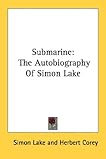But they lie in wait for their own blood;
They ambush their own lives.
So are the ways of everyone who gains by violence;
It takes away the life of its possessors.
Proverbs 1:18-19
The historical Brethren of the Coast were comprised of Protestant French Huguenot, English and Dutch privateers who during the 1600s operated in the Caribbean against the holdings of the Catholic countries of France and Spain. Over time, this loose coalition of privateer captains and crews would begin to fracture along national lines, until all that remained of the Brethren were those who discarded the legal fiction of the letters of marque and preyed on anyone who had the wealth.
At the end of the Golden Age of Piracy, Caribbean pirate crews established a "Privateer's Republic" in 1706 that lasted until 26 July 1718 on what is now the island Nassau, the Bahamas. This was the last of the Caribbean pirate capitols that in a way formed a governmental devil's triangle, the three capitols having been Port Royal, Jamaica, the Island of Tortuga off Hispaniola, and Nassau.
The War of Spanish Succession (1701-1714) gave privateers the golden opportunity to hone their lethal skills and grow in number. However, the examples of the mercenary excesses of the various wars of religion that plagued Europe during the 1600s did not go unnoticed. Governments took note of those skills and hunted down the pirates as enemies of all mankind whenever they grew strong enough to pose a real threat.
The pirates who called Nassau their home port included the likes of Charles Vane, Edward Teach, a.k.a. Blackbeard, his teacher Benjamin Hornigold, Calico Jack Rackham and others, Rackham's major claims to fame were having the female pirates Anne Bonny and Mary Read. among his crew and to have a cay posthumously named after him off Port Royal, Jamaica where the authorities hung his body as a warning to other pirates.
For a brief time, the pirates held control of Nassau with Blackbeard as the first and last Chief Magistrate of the Privateer's Republic. Queen Anne appointed Woodes Rogers, a famous sea captain and former privateer, as the first Royal Governor the Bahamas, the only stipulation being that he would have to first take back the Bahamas. He proved to be both fearless and incorruptible.
On 26 July 1718, Rogers led a military expedition to take back Nassau. Driven out by Rogers, Blackbeard began his self-destructive wanderings that ended in his death in North Carolina waters. Rackham welshed on a pardon from Rogers and was pursued until his eventual capture off the coast of Jamaica.
Of the pirates who received a pardon, Benjamin Hornigold turned his back on his old ways and instead became a pirate hunter under Rogers. He died at sea in 1719 during a hurricane, chasing the last of Nassau's pirates.
The Brethren of the Coast did not fade out completely. They last came to prominence in the early 1800s when Jean Lafitte established pirate settlements on the Louisiana island of Barataria and later at Galveston, Texas. Pursued by the US Navy, Lafitte abandoned his operations in the United States. Turning to the newly formed Republic of Colombia, he is supposed to have died in 1823 fighting the Spanish as a privateer. Like Bartholomew Roberts, his body was never recovered.
As a writer, I asked myself, what if the leaders of the Brethren of the Coast had seen the end coming and began to hide their organization so thoroughly that only its mercenary tip was ever visible to the pirate hunters? What if they had a purpose that went beyond their own time? Those are some of the secrets that you will have to read Black Flag, Black Ship to find out.
Monday, March 1, 2010
Subscribe to:
Post Comments (Atom)














No comments:
Post a Comment